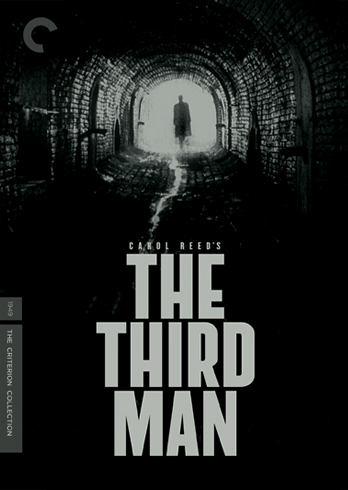 Released in 1949, Carol Reed’s “The Third Man†is an effective exercise in suspense that is built around the enigmatic presence of screen legend Orson Welles. Of course, the thing is, outside of a handful of scenes, he’s hardly in the movie. Despite this, the movie is filled with the pervasive sense that he is somewhere every corner, his over-sized shadow draped over this well-sketched plot of early Cold War intrigue. This film is a good representation as any of the now mostly forgotten genre of film noir.
Released in 1949, Carol Reed’s “The Third Man†is an effective exercise in suspense that is built around the enigmatic presence of screen legend Orson Welles. Of course, the thing is, outside of a handful of scenes, he’s hardly in the movie. Despite this, the movie is filled with the pervasive sense that he is somewhere every corner, his over-sized shadow draped over this well-sketched plot of early Cold War intrigue. This film is a good representation as any of the now mostly forgotten genre of film noir.
Penned by renowned literary figure Graham Greene, the film tells the story of paperback fiction writer Holly Martins who arrives in postwar Vienna because of a job offer from his old friend Harry Lime. Mysteriously though, Lime is nowhere to be found and has in fact been killed in an apparent freak accident. There’s even a tombstone in the local cemetery. However as Martins asks around about Lime, he slowly discovers a web of conspiracy that lies just beneath the surface. Over the course of his misadventures through the downtrodden back streets of Vienna, Martins encounters a beautiful and mysterious woman, an overzealous English officer, and more than a handful of unsavory locals.
One of the things that “The Third Man†does well is establish the location. The film begins with a snappy voice-over that sets up the situation in Vienna. At the end of World War Two the city is divided into zones, each administered by a different member of the victorious Allies. In the middle is an international zone that everyone shares. Under the surface of all this is a lively black market providing anything anyone may need. These are the groups that Martins finds himself going up against, as an underdog, as is usual for the protagonist of a noir mystery.
Filmed on location in Vienna, we are shown a damaged city in the middle of rebuilding itself. It feels like a place that is in transition, the new owners ushering it into an uncertain future while it retains an old European feel. A nice touch that adds to the liveliness is the wet cobblestones brought to life in beautiful black and white cinematography. Perhaps the most memorable scene in the movie takes place on a famous Ferris wheel and is used to great effect.
Joseph Cotten ably plays Martins, a man whose only experience with solving crime is through the stories in the pulp fiction he writes. He’s in way over his head and knows this, but feels an obligation to get to the bottom of what happened to his friend. Alida Valli perfectly fits the characterization of the classic noir femme fatale. She decides to help Martins, however there’s something about her that makes you mistrust her intentions. Trevor Howard is highly entertaining as the perhaps stereotypical Major Calloway, always proper and constantly befuddled by the actions of a “silly†American.
Performing one of the great supporting roles is Orson Welles. His handful of scenes is nothing short of electric. You can see what all the fuss around his character is all about. He’s given a monologue that doesn’t disappoint in its breathless intelligence. Whenever he’s on screen he owns it.
Welles was known as describing this as a quintessential star role because the other characters would talk about him for an hour, building up anticipation in the audience, allowing him to sweep in and ride that wave of expectation. His stamp is so clear on the movie that many believed that he actually directed it. However, this is untrue as this was truly Carol Reed’s picture. It is true though that “The Third Man†would not have been made were it not for Welles’ earlier films, such as “Citizen Kane,†having laid the groundwork. Another truth is that like that production, this picture stands as one of the classics of the period that still manages to impress.

Leave a Reply